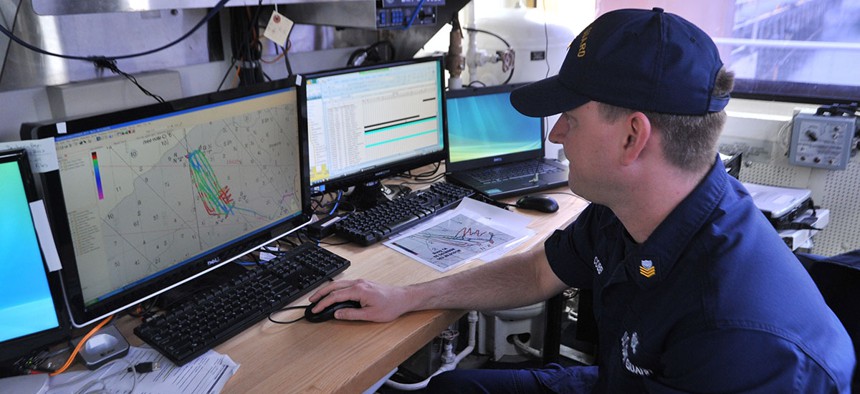sponsor content What's this?
Windows 10 Can Give the Coast Guard a Virtualized Future

Presented by
FedTech

The service branch thinks it can enhance its cybersecurity posture via virtual desktop infrastructure.
It’s no secret that the Defense Department is in the midst of a massive shift to Microsoft’s Windows 10 operating system, in large part to enhance the Pentagon’s cybersecurity.
Ultimately, the DOD hopes to migrate 4 million devices to Windows 10, and though progress has been slower than expected, the service branches are moving forward with their upgrade plans.
The Coast Guard, which is technically part of the Department of Homeland Security, though it is also a military service branch, is pushing ahead with its own Windows 10 migration. The Coast Guard will use Windows 10 to enable greater use of virtualized desktop infrastructure, which will boost the service branch’s cybersecurity.
Brian Burns, the Coast Guard’s acting CIO, tells Federal News Radio that, in January, the DHS and DOD reached an agreement under which the Coast Guard will use the DOD Information Network and adhere to DOD cybersecurity requirements, standards and policies. All DOD components are using the Windows 10 Secure Host Baseline, which includes not only the Windows 10 operating system but also additional secure preconfigured applications.
Windows 10 Enables Virtualization for the Coast Guard
Burns tells Federal News Radio that the Coast Guard is on schedule to move to Windows 10 by March 2018. The migration will bring numerous benefits to the service branch.
“It gives us that secure baseline and allows us to take all of the outdated IT and operating systems that are out there and move them to that common baseline that is more capable and more secure,” Rear Admiral Kevin Lunday, the commander of the Coast Guard’s Cyber Command, tells Federal News Radio. “It’s essential to giving us the terrain, our own networks that are part of the overall DOD Information Networks, that we can both operate and defend, and maneuver inside them against adversary threats.”
As the Coast Guard ramps up its deployment of the Secure Host Baseline over the next few months, it also is looking to roll out virtual desktop infrastructure, Lunday says. Virtualizing desktops and giving the Coast Guard remote access capabilities will boost cybersecurity.
“The next level beyond that is with the ‘internet of things,’ wearable devices and more mobile devices,” Lunday says. “We are taking in pieces as we go, making sure we have the priorities set in terms of what is most mission essential for operational capabilities, starting with maritime radio as a mobile strategy.”
The Coast Guard is testing VDI for remote connections at the same time it is rolling out Windows 10, Burns says, according to Federal News Radio, and the ultimate goal is to virtualize desktops across the Coast Guard.
Windows 10, VDI and the cloud are all part of “a strategic change at how the Coast Guard looks at, how it acquires and operates and sustains all of its IT systems and networks, and even its telecommunications,” Lunday says.
The Coast Guard, Lunday says, is trying to transform 1990s-era collection of computer networks, systems and infrastructure that has had technologies bolted onto it over time. At first, that was done for administrative purposes, but now the Coast Guard relies on that infrastructure for almost every part of its operations, Lunday tells Federal News Radio.
“We are modernizing not only our approach, but actually all of that technology into a strategic asset, a capital asset like a fleet of cutters, boats or aircraft, what we call an enterprise mission platform,” Lunday says. “So we think of Windows 10 in this current ongoing effort as really the discrete first phase of that modernization. Virtual desktop interface will be another follow-on phase, and then the movement to the [Defense Information Systems Agency Joint Information Environment] will be another phase.”
This content is made possible by FedTech. The editorial staff of Nextgov was not involved in its preparation.


